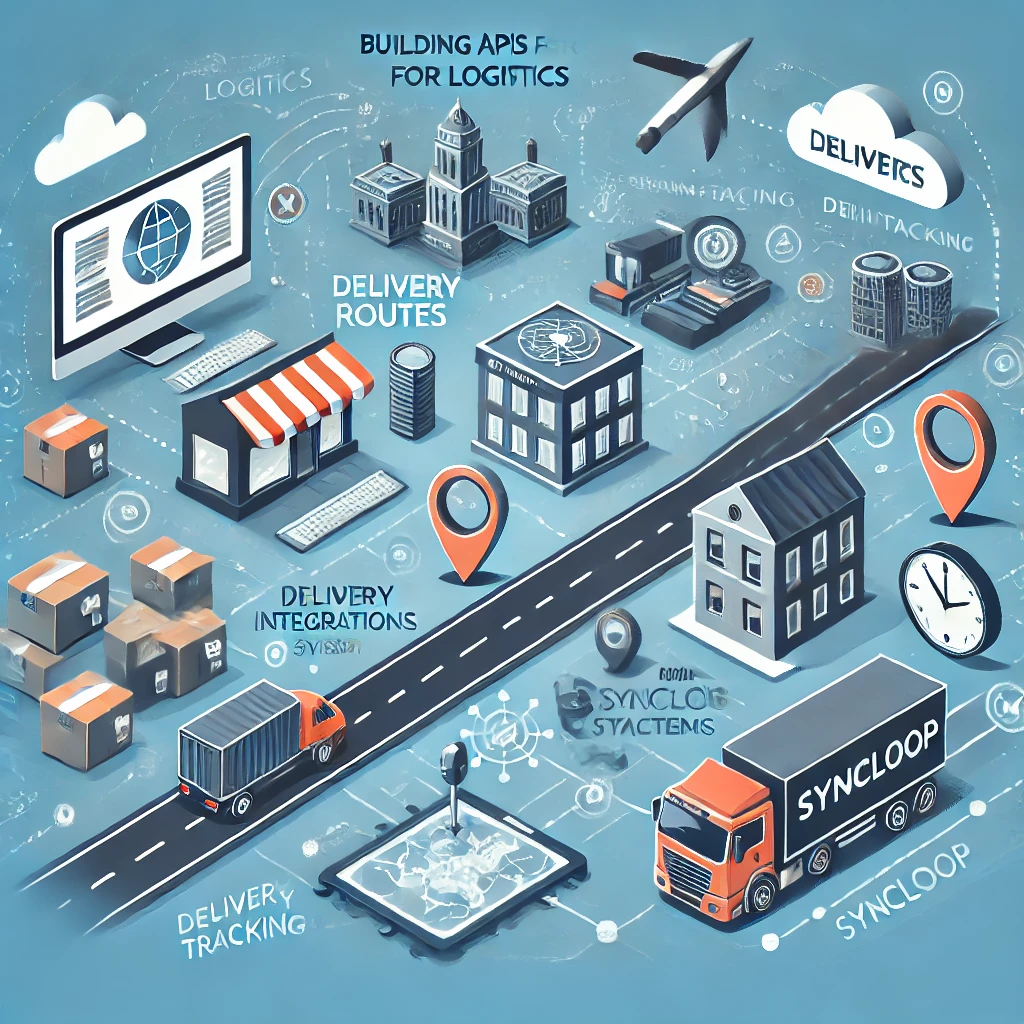Building APIs for Logistics and Delivery Tracking with Syncloop

Syncloop offers a comprehensive platform for building APIs tailored for logistics and delivery tracking systems. This blog delves into the features of Syncloop that streamline API development for logistics and best practices for implementing these APIs effectively.
The Role of APIs in Logistics and Delivery Tracking
APIs are indispensable in logistics and delivery tracking, enabling:
- Real-Time Tracking: Providing live updates on shipment locations and statuses.
- Order Management: Facilitating seamless order placement, processing, and fulfillment.
- Inventory Updates: Synchronizing inventory data across warehouses and distribution centers.
- Customer Notifications: Automating alerts and updates for customers about their deliveries.
- Integration: Connecting with third-party platforms such as payment gateways and analytics tools.
Challenges in Building Logistics APIs
- Real-Time Data Handling Ensuring APIs can process and deliver live tracking data without delays.
- Scalability Managing high volumes of API requests during peak logistics operations.
- Security Protecting sensitive data, including customer information and shipment details.
- Integration Complexity Enabling interoperability with diverse systems and third-party platforms.
- Error Handling Managing API errors gracefully to ensure seamless operations.
How Syncloop Simplifies Logistics API Development
Syncloop provides tools and features that make API development for logistics and delivery tracking efficient and reliable:
- Real-Time Data Streaming Support for real-time tracking and updates ensures instant data delivery.
- Scalable Infrastructure Handle high traffic and large datasets with Syncloop’s cloud-native scalability.
- Dynamic Data Mapping Transform and align data from various sources for consistent communication.
- Workflow Automation Automate order processing, tracking updates, and notifications.
- Comprehensive Security Features Implement OAuth 2.0, role-based access controls, and encryption to secure APIs.
- Monitoring and Analytics Gain insights into API performance and identify bottlenecks with real-time dashboards.
- Third-Party Integration Easily connect with payment gateways, e-commerce platforms, and other external systems.
Steps to Build Logistics and Delivery Tracking APIs with Syncloop
Step 1: Define API Use Cases
Identify the core functionalities required for your logistics operations. Examples include:
- Real-time shipment tracking.
- Integration with warehouse management systems.
- Automated delivery notifications for customers.
Step 2: Create Endpoint Definitions
Use Syncloop’s API builder to define endpoints such as:
- /shipments/{shipmentId}/status: Retrieve real-time shipment status.
- /orders/create: Place a new order.
- /inventory/update: Sync inventory levels across warehouses.
Step 3: Integrate Data Sources
Leverage Syncloop’s data integration tools to connect APIs with:
- GPS devices for live tracking data.
- Inventory databases for stock updates.
- Third-party systems for payment and analytics.
Step 4: Automate Workflows
Design workflows using Syncloop’s automation tools to streamline processes, such as:
- Updating shipment status automatically upon reaching milestones.
- Sending customer notifications for delivery updates.
- Generating and sharing invoices after order completion.
Step 5: Test and Optimize APIs
Simulate real-world scenarios using Syncloop’s testing environment. Optimize APIs for:
- Low-latency data handling.
- High throughput during peak operations.
- Graceful error recovery and retries.
Step 6: Deploy and Monitor
Deploy APIs with Syncloop’s scalable infrastructure. Use monitoring tools to:
- Track API usage and performance.
- Identify and resolve issues in real time.
- Analyze traffic patterns for optimization.
Best Practices for Logistics APIs
- Prioritize Real-Time Capabilities Ensure APIs deliver live updates for tracking and notifications.
- Implement Robust Security Protect APIs with strong authentication, encryption, and access control measures.
- Enable Scalability Design APIs to handle growth in users, orders, and data volumes.
- Adopt RESTful Design Principles Use intuitive and consistent endpoint structures for easy integration.
- Provide Comprehensive Documentation Include clear instructions and examples for developers integrating with your APIs.
Example Use Case: E-Commerce Delivery Tracking
An e-commerce platform uses Syncloop to build APIs for delivery tracking:
- Real-Time Updates: APIs fetch live tracking data from GPS devices and update customer dashboards.
- Order Integration: APIs sync orders with inventory systems to optimize fulfillment.
- Customer Notifications: APIs send automated SMS and email updates for delivery milestones.
- Analytics Integration: APIs connect with analytics platforms to track delivery performance and optimize routes.
Benefits of Using Syncloop for Logistics APIs
- Improved Efficiency: Automate workflows and reduce manual intervention.
- Real-Time Insights: Deliver live updates to customers and stakeholders.
- Scalability: Support growing logistics operations without compromising performance.
- Enhanced Security: Protect sensitive data with advanced security features.
- Faster Development: Simplify API creation and management with intuitive tools.
The Future of Logistics and Delivery Tracking
As logistics operations become more complex, robust APIs will play a vital role in enabling seamless integration, real-time tracking, and enhanced customer experiences. Syncloop empowers developers to build scalable, secure, and high-performing APIs that meet the demands of modern logistics ecosystems.
Image Description
A conceptual illustration showcasing logistics and delivery tracking APIs built with Syncloop. The image highlights real-time shipment tracking, automated workflows, and scalable API performance in a dynamic logistics environment.
Back to Blogs